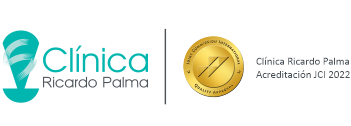Mastectomy is a complex surgical procedure to remove one or both breasts, partially or completely. Considered part of breast cancer treatment.
Before the Procedure
Make a list of questions before going to your appointment to help you ask your questions
- You will sign a form known as: Informed Consent, in which you authorize the execution of this surgical procedure.
- Mention all your allergies, history of diseases and the usual medications you take; you may need to stop them before surgery.
- One day before the date indicated for your surgery you must fast, at least eight hours before the procedure.
General care after surgery during hospital stay:
Early movement is important to ensure immediate recovery
- Start by making simple movements such as getting up from the chair, going to the bathroom, and making passive movements in the affected arm.
- Keep the arm on the operated side raised and supported by a pillow. This improves blood circulation and reduces swelling.
- Avoid having your blood pressure taken, blood samples taken, peripheral lines routed, and injections given in the affected arm.
Once at home follow these recommendations:
- Keep the skin of the operated area clean and dry.
- Do not use very hot or cold water.
- Use a neutral soap, for protection and balance of dry skin.
- After showering, dry well the wound area and cover it.
- Use deodorants that contain less alcohol.
- Apply moisturizer frequently.
- Avoid wearing synthetic and tightly woven fabrics.
- Make exercises such as squeezing a ball, opening and closing your fist, bending and stretching your arm at elbow level.
- Avoid strenuous activities for about six weeks after surgery.
- Avoid having your blood pressure taken, injections given, or blood drawn from the affected arm.
- Do not wear any bracelet, ring, watch, or carry heavy items on that arm.
- Wear gloves when doing household chores.
- Use an electric razor if you want to shave your armpits.
- Avoid any damage or infection to the affected arm as much as possible.
- At night, slightly elevate the swollen arm.
- Avoid long term exposure to the sun. Wear long-sleeved shirts and sunscreen.
Food
- Eat protein-rich foods for skin regeneration.
- Eat fresh and cooked vegetables, dairy products, foods with fiber, fresh fruit, and plenty of water.
- Avoid eating condiments and spices.
- Reduce consumption of salt and coffee; both increase swellings.
- Eat citrus, green leafy vegetables, whole grains; lean meat such as chicken, rabbit and turkey; fish and eggs.
Exercises and physical therapy after a mastectomy:
Breathing exercises: take sessions of 10 to 12 deep breaths, 3 to 5 times a day. Do not overwork yourself at the beginning.
- Diaphragmatic exercises: Take air through your nose holding your breath for a few seconds and slowly expel it through your mouth (control the movement of the abdomen by placing your hands on it).
- Upper chest exercises: Breathe in by expanding the upper chest, holding the air for a few seconds, and breathe out slowly through the mouth (place your hands on the upper chest to control movement).
- Lower chest exercises: Breathe in by expanding the lower chest, holding the air for a few seconds, then breathe out slowly through your mouth (place your hands at the level of the last ribs to control movement).
Exercises to promote lymphatic flow, repeat the exercises 3 to 5 times a day, according to your tolerance, if pain appears you can stop and rest a little
- Sitting in a chair, slowly raise your arm forward by opening and closing your hand. In the same position, spread the arm laterally by opening and closing the hand.
- Sitting at a table, place your hand on a book resting on the table, slowly slide the book forward (until you begin to feel discomfort), and return to the starting position.
- With your elbow bent and resting your hand on the wall, climb up with your fingers, as if you were walking on the wall.
- Make the gesture of combing your hair. Hold your hand from your nose to the back of your neck.
- The hand on the operated side should be placed on the opposite ear, extending the arm laterally and then passing it over the head towards the ear on the opposite side.
Exercises to prevent lymphedema
After regaining the mobility of your arm, perform these exercises in sessions of 5 to 10 repetitions, at least twice a day:
- Grab a cane or stick with both hands and lift it above your head.
- With arms crossed, raise them until the palms of the hands join.
- Placing both hands criss-crossed at the back of the neck, bring your elbows forward and then spread them as far apart as possible without letting go of your hands.
- Standing in front of a wall, draw a circle as large as possible with the affected arm, first in one direction and then in the other.
- With arms extended forward, at shoulder height, bend your elbows while making a fist and stretch your arm again while opening your hands.
- Move your arms, as if you were swimming.
- Bend and extend both wrists. Repeate 10 times.
- Bring your hands together in front of your chest and press one against the other, for 5 seconds. Repeat 10 times.
Contact your treating physician immediately if any of the following occurs:
- Signs of infection, fever and chills, oral temperature over 38 ° C for 24 hours or more.
- Redness, swelling, increased pain, excessive bleeding, or discharge from the incision site.
- Cough, shortness of breath, chest pain, severe nausea or vomiting.
- Redness, heat, swelling, stiffness, or hardening of the arm or hand (on the side where the surgery was performed).
- New and unexplained symptoms.
- Lumps or changes in the skin.


